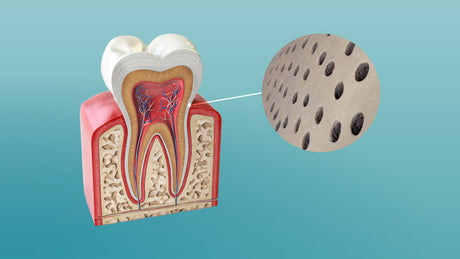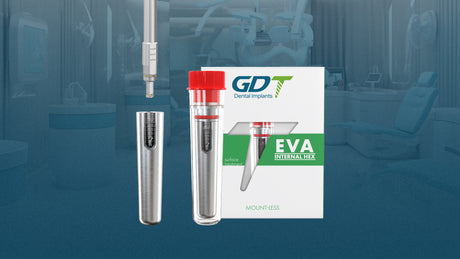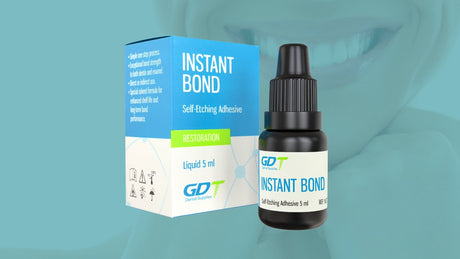In this WholeDent.com article, we will delve deep into the process of cementation, which involves securely bonding dental crowns and prosthetics to the underlying tooth structure or implant, and discuss how GDT Implant Cement plays a vital role in extending their lifespan and maintaining oral health.
Causes of Wear and Tear
The degradation of dental crowns and prosthetics can be attributed to several factors. Continuous mechanical forces from chewing and grinding exert significant pressure on these restorations, leading to micro-cracks and material loss. This wear is further exacerbated by bruxism, a condition characterized by involuntary grinding or clenching of the teeth¹. Additionally, the oral environment, with its varying pH levels influenced by diet and oral hygiene practices, can chemically erode the materials used in these restorations².
The Cementation Process
Cementation is the process by which dental crowns and prosthetics are adhered to the tooth or implant abutment. This process begins with the preparation of the tooth, which involves cleaning and shaping it to create a suitable surface for bonding³. The selection of an appropriate dental cement is critical, as it must provide a strong, durable bond while being compatible with the biological tissues in the mouth. The cement is then applied to the restoration, which is carefully placed onto the prepared tooth. Finally, the cement is allowed to set, either through chemical or light activation, to ensure a secure bond⁴.
Importance and Necessity of Cementation
The importance of cementation in dental procedures cannot be overstated. Proper cementation ensures that restorations remain firmly attached, preventing dislodgement during daily activities such as eating and speaking. It also provides a seal that prevents micro-leakage, which can lead to decay under the restoration and compromise its integrity. Furthermore, a well-cemented restoration helps in evenly distributing masticatory forces, reducing stress on the underlying tooth or implant and enhancing the overall stability of the dental prosthesis⁵.
Enhancing Cementation with GDT Implant Cement
GDT Implant Cement offers several advantages, making it an excellent choice for both temporary and permanent cementation of crowns and bridges. Its formulation provides exceptional strength and durability, essential for withstanding the mechanical forces exerted during chewing and grinding. Additionally, it offers a secure bond without the drawbacks associated with traditional cements, minimizing the risk of marginal gaps and micro-leakage, thus protecting against secondary caries and restoration failure.
In conclusion, the process of cementation is fundamental to the success and longevity of dental crowns and prosthetics. In this WholeDent.com article, we invite our clients to stay informed on the subject, and also to utilize advanced products such as the GDT Implant Cement, which dental professionals use to ensure their restorations are not only durable and functional but also safe and biocompatible, thereby enhancing patient outcomes and satisfaction.
- WebMD: Dental Crowns
- ResearchGate: Cementation of Crowns and Bridges
- ScienceDirect: The Cementation of Crowns and Fixed Partial Dentures
- PMC:Dental Luting Cements: An Updated Comprehensive Review
- ScienceDirect: Effect of cement type on the clinical performance and complications of tooth-supported crowns














